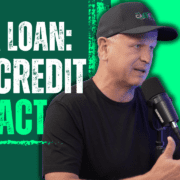How to fund with lines of credit
Categories: Blog Posts
How to fund with lines of credit
Today we are going to discuss how to fund your real estate investments with lines of credit. With lenders cutting back, there is a greater need for investors to find alternative financing. Don’t let this lending squeeze affect you! Let’s take a closer look at your options and how you can ensure success.
What is a lending squeeze?
If you’re a real estate investor, you’re probably familiar with the concept of shrinkage in the loan business. During economically turbulent times, lenders cut back the amount of money they’re willing to lend. As a result, this affects how much money you get for your project (aka, your LTVs).
For example: If the typical bridge lender offers you 80-90% of the purchase, you’ll need something to help you cover the other 10-20%. It’s up to savvy investors to find alternative sources of funding to fill that gap left by your loan.
What Determines Your Gap Financing in Real Estate?
Firstly, there are a few ducks you’ll need in a row before diving into gap financing. Most gap funding will determine whether to lend to you based on three things: credit, assets, and experience. Both the amount of primary funding you’ll receive from your lender and the amount of gap funding you’ll be able to get will be dependent on credit. Also, you can get other lines of credit by putting up your assets as collateral. Finally, having experience or knowing what you’re doing may incline some gap funding lenders to give you a loan.
1. HELOC
If you have good credit and real estate assets (owner-occupied or not), you should always have a line of credit called a HELOC available to you. HELOC stands for “home equity line of credit.” These funds will typically be the safest, easiest, and cheaper you can get. All real estate investors who have property and good credit should have a HELOC. This is going to be your safest, easiest, and cheapest source of funds because they’re always available to you.
2. Lines of Credit from Banks
But what if you have good credit but no real assets? In that case, you’ll need to look at other, unsecured options to fill the gap. One option is to use an unsecured line of credit from a local bank or national company. These lines of credit typically have higher interest rates than a HELOC, but they’re still a good option if you have good credit.
Don’t Misuse Your Funds
One thing needs to be clear with gap funding: dDo not abuse it. If you use a line of credit that was intended for a real estate investing project, then make sure it’s used for that purpose. It should also be entirely paid off after each transaction is completed. Treat credit like a lender, and treat your investments like a business. Never use real estate lines of credit for personal use. It will kill your credit, your financial future, and your investing career.
How to Get Gap Financing in Real Estate
We’re happy to help with any questions you have about funding or gap financing on real estate projects.
We’ve helped with thousands of transactions worth millions of dollars using OPM. You can download our free OPM guide here.
Watch our most recent video to find out more about: How to fund with lines of credit
Any other questions? Send us an email at Info@TheCashFlowCompany.com.











